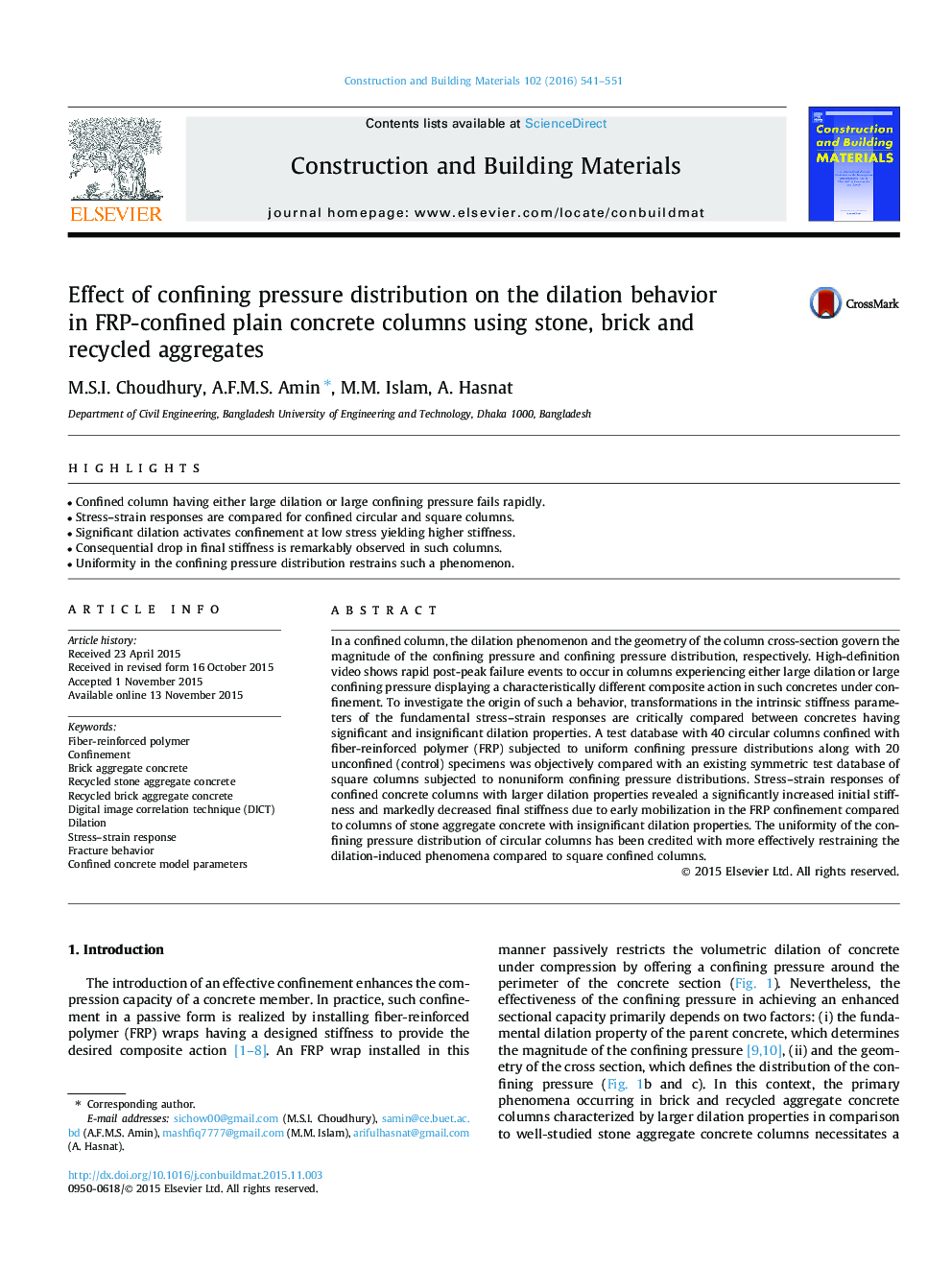| Article ID | Journal | Published Year | Pages | File Type |
|---|---|---|---|---|
| 10285070 | Construction and Building Materials | 2016 | 11 Pages |
Abstract
In a confined column, the dilation phenomenon and the geometry of the column cross-section govern the magnitude of the confining pressure and confining pressure distribution, respectively. High-definition video shows rapid post-peak failure events to occur in columns experiencing either large dilation or large confining pressure displaying a characteristically different composite action in such concretes under confinement. To investigate the origin of such a behavior, transformations in the intrinsic stiffness parameters of the fundamental stress-strain responses are critically compared between concretes having significant and insignificant dilation properties. A test database with 40 circular columns confined with fiber-reinforced polymer (FRP) subjected to uniform confining pressure distributions along with 20 unconfined (control) specimens was objectively compared with an existing symmetric test database of square columns subjected to nonuniform confining pressure distributions. Stress-strain responses of confined concrete columns with larger dilation properties revealed a significantly increased initial stiffness and markedly decreased final stiffness due to early mobilization in the FRP confinement compared to columns of stone aggregate concrete with insignificant dilation properties. The uniformity of the confining pressure distribution of circular columns has been credited with more effectively restraining the dilation-induced phenomena compared to square confined columns.
Related Topics
Physical Sciences and Engineering
Engineering
Civil and Structural Engineering
Authors
M.S.I. Choudhury, A.F.M.S. Amin, M.M. Islam, A. Hasnat,
